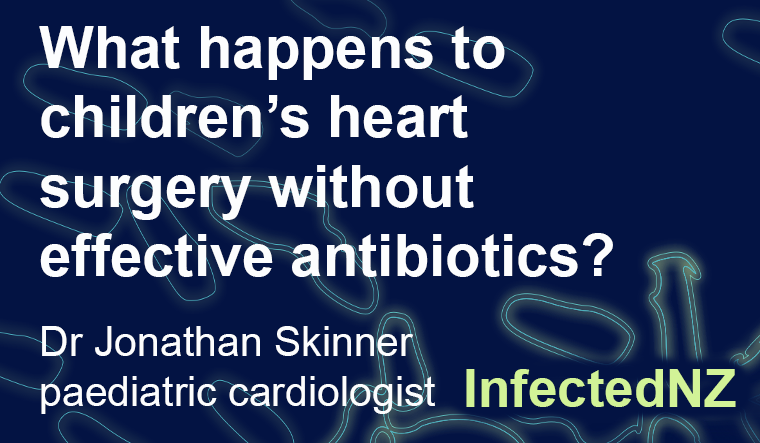Heart defects are collectively the commonest abnormality in newborn babies. About one infant in every 150 has some form of defect; a hole in the heart, or parts of the heart underdeveloped or in the wrong place. Four hundred children every year undergo heart surgery in New Zealand at the Starship Children’s hospital, and another 250 undergo keyhole (cardiac catheter) interventions. Currently over 97% survive their operation, including the most complicated cases and most severely ill infants. Most leave the hospital well, with a neat “zipper” scar down the front of their chest which will gradually fade to a pale white line.
The very first heart operation in the world, in 1895 in Norway, was on a 24 year old man. He survived the surgery, but died several days later from overwhelming infection. It was relatively simple surgery but there were no antibiotics at that time.
These days, surgeons introduce goretex to patch holes, plastic and metal valves to replace faulty valves, and electrical pacemakers to keep a stable rhythm. Operations are done in state-of-the-art operating rooms with controlled air flow, and great efforts are taken to keep the operating field sterile. Even so, internationally about one in five patients (20%) get an infection early after the surgery, most commonly in the lungs or in the surgical wound. 3% overall get an immediately life threatening infection such as one around the heart, or in the blood. When treated with a course of antibiotics, they can fully expect to recover. Today, it is rare for a child to die from such post-surgical infection, even in severe cases.
So what would happen without antibiotics? Modern children’s heart surgery has never been performed without the availability of antibiotics, so, in truth, it is impossible to know for sure how many infants and children would die or suffer prolonged illness or disfigurement without them. We can be sure that 3% will die from their severe infections. Given that around 20% will get an infection, we can guess that the post-operative ward would be an entirely different place. It would be a place of rampant bacterial infection, pus draining from open wounds, chest walls never healing properly, and some children staying for many weeks or months. Infected children and their visiting family would have to be isolated from other children. And it would be a place of death. The vulnerable very sick newborns would succumb in large numbers. And it will be a painful and often foul-smelling death.
The spectre of infection would hang over every procedure. Hospitals in general will be a place of death and suffering more than hope and recovery. So the threshold for doing an operation will go up. Parents will naturally be too scared to allow their child to undergo what today would be a routine procedure. Children therefore will suffer the consequences of their heart problem for longer; suffering shortness of breath, poor energy and unable to take part in sport. Some would be unable even to get to school. Infants in heart failure would not gain weight and may die from chest infections.
I am also imagining myself in a world without antibiotics. I could be confined to a wheel chair, because my hip surgery would have been inadvisable given the high risk of infection. That nasty infected boil I once had from a mosquito bite would possibly have disfigured and damaged much of my right hand, a hand I need to perform heart procedures.
I hope that what we heart specialists do now for the children we care for represents merely the dawn of even greater things. But if we don’t get more antibiotics, and use them wisely, it may be that future parents and their children will be longing for the past golden age of children’s heart surgery and intervention; 2016.
About
Jonathan Skinner is a paediatric cardiologist/electrophysiologist and Auckalnd’s Starship Children’s Hospital and an Honorary Professor of Paediatrics Child and Youth Health at the University of Auckland.
What is InfectedNZ?
Hey, Aotearoa. It’s time we had a chat about infectious diseases and what we’re going to do about the looming antimicrobial armageddon. That’s why we’ve asked leading health, social and economic researchers, and people with personal stories, to help us get real about our vulnerability and discuss solutions. Follow their blogs right here at tepunhahamatatini.ac.nz and watch the conversation spread across social media with #infectedNZ.
Backing it all up, wherever possible, is data from the good folk at Figure.NZ. Their super duper charts are based on data sourced from public repositories, government departments, academics and corporations. Check out their #infectedNZ data board and sign-up to create your very own data board on any topic that floats your boat.

